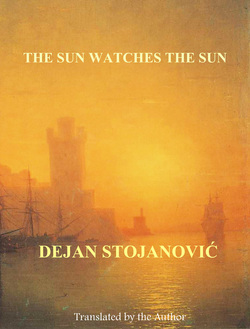
Although concise, the poems convey in a powerful and specific manner messages from the triad circle-God-eternity, connected by man's destiny and the poet's concept of human life and origins, and of the universe itself. In other words, microcosmic observations lead to macrocosmic revelations and didactic conclusions. The poems seem to teach us what is obvious in the context of common sense, often surprisingly remote to the modern man.
In terms of style and format, the author has a coextensional approach; he uses relatively simple expressions and words in an interplay of brilliant meanings that bring about highly complex but easily readable structures. If elegance is represented by simplicity, then these are some of the most elegant verses imaginable; unadorned verses that are a source of beauty and wisdom.
Stojanovic's perceptions of light and darkness, of fantasy and reality, of truth and falsehood present us with a circular format of infinity and resurrection.
The format has its logical beginning and end. "The Sun is Watching Itself" begins with poems dedicated to God and the universe, then descends from the metaphysical to the philosophical, focusing on more ordinary such us the symbolic meaning of a stone, a game, a place, silence, hopelessness, and the question "Is it possible to write a poem?" Stojanovic's collection might well serve as an affirmative answer to this question. The poet has taken us on a long journey from God and universe to our everyday world. We all seem to be a part of a circle, says the author, searching for the eternal in the universe, only to realize the finality of life on earth. The poet's message is doubly effective for its extraordinary, soul-searching content and its reflective, powerful language.
-Branko Mikasinovich, Washington, D.C.
WLT World Literature Today, A Literary Quarterly of the University of Oklahoma, Norman, Oklahoma
Volume 74, Number 2, Page 442, Spring 2000
 RSS Feed
RSS Feed